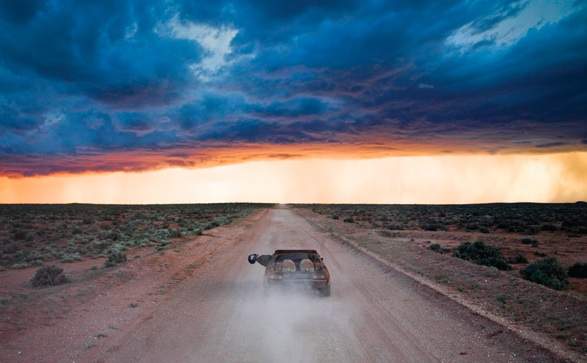Shaun Gladwell: Interior Linework/ Interceptor Intersection
Friday, March 26, saw Shaun Gladwell’s new exhibition Interior Linework/ Interceptor Intersection open at Campbelltown Arts Centre. Gladwell has become a ubiquitous presence in discussions of contemporary Australian art and may now also appear in conversations relating to that $64,000 question: ‘what is our national identity?’ After studying at COFA, Gladwell began exhibiting at significant […]
Overview
Friday, March 26, saw Shaun Gladwell’s new exhibition Interior Linework/ Interceptor Intersection open at Campbelltown Arts Centre. Gladwell has become a ubiquitous presence in discussions of contemporary Australian art and may now also appear in conversations relating to that $64,000 question: ‘what is our national identity?’
After studying at COFA, Gladwell began exhibiting at significant local galleries such as Artspace and Sherman Galleries. In addition to paintings, Gladwell introduced skateboarding, BMX riding and hip hop dancing (activities not usually associated with the white cube) as subject matter in his works. Yet for all his interest in the fashionable and narcissistic forms of video and performance, and the inclusion of these ‘cool’ subcultures, Gladwell did not lose his interest in making objects as art. The miniature BMX bikes displayed in a vitrine at the most recent Sydney Biennale, were, for me, extremely aesthetic objects.
In addition to some new works, Interior Linework/ Interceptor Intersection consists of works from the MaddestMaximvs project, which was shown at the official Australian Pavilion at the 2009 Venice Biennale. MaddestMaximvs marks a paradigmatic shift for Gladwell and, most significantly, sees the artist engage with Australian cultural identity and explore dimensions of Australian masculinity. Max, the protagonist in George Miller’s trilogy, is an Australian icon. A composite drawn from our inherited cultural imagination, he is part lawman, part outlaw — reminiscent of bushrangers, explorers and even boundary riders. However, as Blair French notes, reverence of this character has led to audiences missing subtleties and particularities of identity and meaning, not to mention points of doubt, lack, failure and critical wounding.
For me, it is crucial that Gladwell strongly subverts the legacy attached to Max. From a formal starting point, Gladwell’s signature slow motion and fixed camera alert viewers to a different stylistic lexicon from the rapid cutting and euphoric visual adrenalin of Miller’s films. In a sense, this parallels Gladwell’s break from the shaky hand-held, constantly moving camera that characterised the skating videos Gladwell encountered and in turn critiqued. Concurrent with earlier works, Gladwell documents activity with no apparent pragmatic or productive output. Audiences are left to consider Gladwell’s explorations of time, place and our relation to the spaces of this country — whether a desert track near Broken Hill or a car park in Kings Cross.
For me, much of art’s attraction lies in its ability to polarise opinion. Instead of making the pilgrimage down to the Masterpieces show in Canberra, stay closer to metropolitan Sydney and visit Campbelltown’s impressive gallery space. This is a show that will drive you to either agree with John McDonald’s description of Gladwell’s oeuvre as banal, or to encounter a series of works that are incredibly relevant in terms of indigenous relations as they presently stand (in the mind of Nikos Papastergiadis), or agree with me that Gladwell’s work is utterly relevant in relation to our constant identity crisis. And, if nothing else, there are two rebuilt V8 Interceptors included in the show, and they’re rad.





